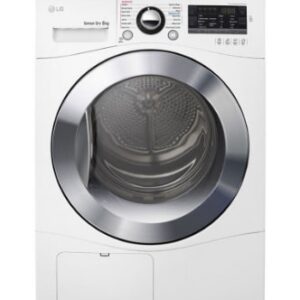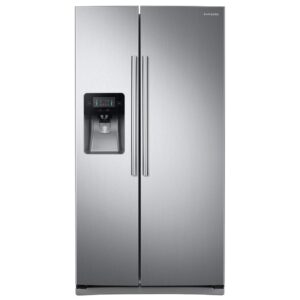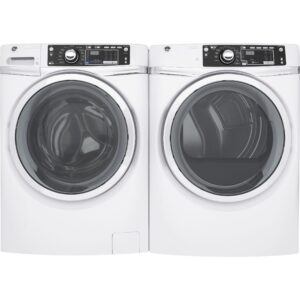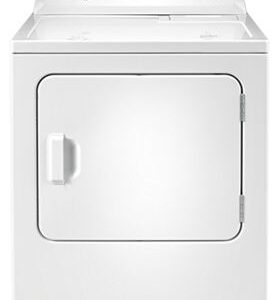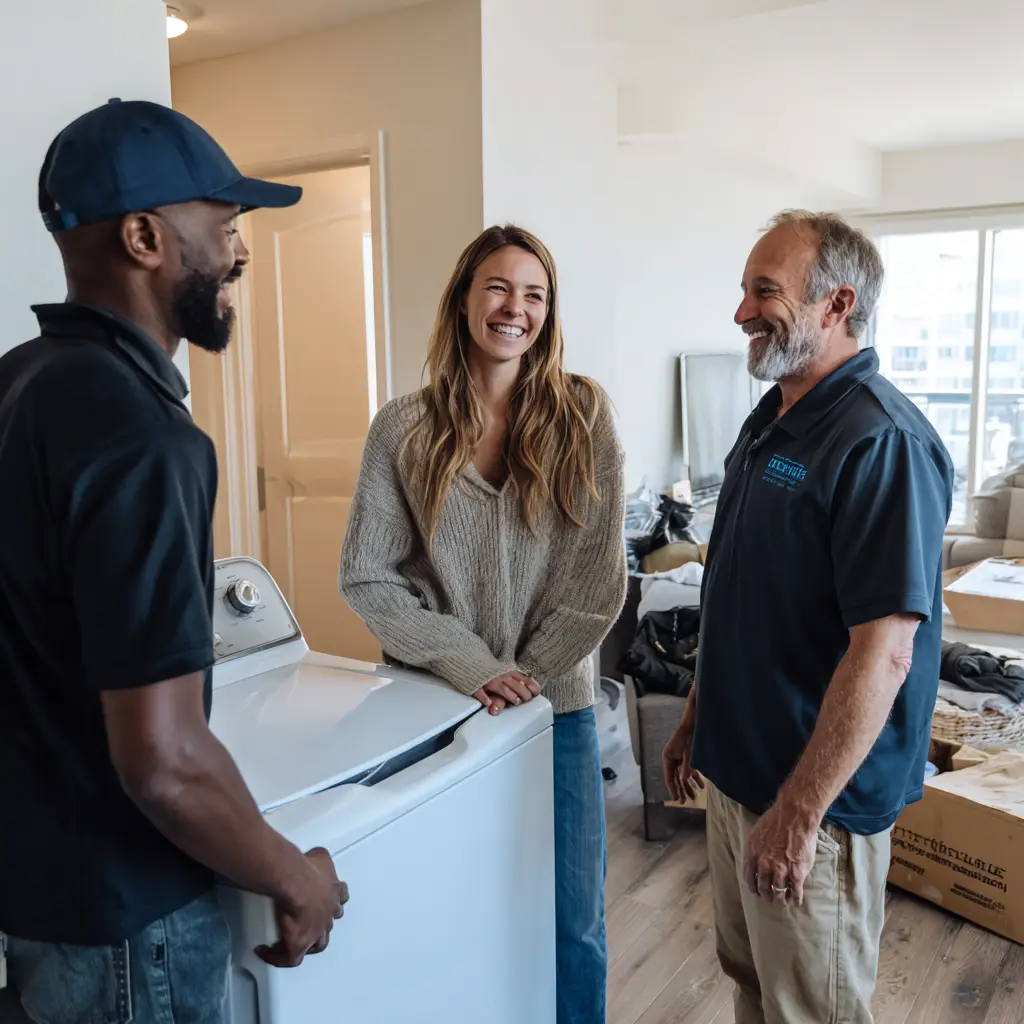Experiencing a dryer not heating up can be more than just a minor inconvenience; it’s a disruption to your daily routine that leaves you with a pile of damp clothes. Before you panic, understand that this common household issue, which could be due to your electric dryer not producing heat, ranges from a simple ‘eco’ setting adjustment to a full lint trap. Whether your dryer runs but no heat emerges, or you’re puzzled why your dryer is not getting hot, knowing where to start can save you time and frustration.
In this article, we’ll walk you through five essential steps to troubleshoot your dryer not heating dilemma. We’ll explore common reasons, such as a tripped circuit breaker or an absent gas supply in gas dryers, and offer DIY solutions that could get your appliance back in action right away. For more intricate problems like a faulty thermal fuse or a malfunctioning heating element, you’ll learn when it’s time to seek professional help. Let’s dive into identifying and solving the root cause of your dryer’s heating issues, ensuring your laundry routine gets back to its efficient best.
Common Reasons for a Dryer Not Heating
When your appliance repair becomes urgent because your dryer stopped heating, you’re likely facing one of several common issues. Let’s troubleshoot together and get your laundry routine back on track, addressing why your dryer won’t heat.
- Airflow Blockages: One of the most frequent culprits is a clogged lint trap or vent hose. These blockages can seriously hinder your dryer’s ability to heat properly. You’d be surprised how often clearing out that lint can make a difference. Make it a habit to clean the lint screen after every cycle.
- Power Supply Woes: For those of you with electric dryers, a tripped circuit breaker can leave you high and dry (or, in this case, damp). Ensure that your dryer is receiving the proper 240-volt power supply it needs to heat up. Sometimes, the solution is as simple as flipping a switch on your breaker box.
- Gas Supply Checks: If you’re using a gas dryer, it’s essential to make sure the gas valve is in the correct position and that your gas bill is up-to-date. It might seem obvious, but these are often overlooked steps in the troubleshooting process.
- Washer Issues: Remember, your dryer’s performance can be impacted by your washer. If your clothes come out of the wash excessively wet, your dryer will have to work overtime and may not heat efficiently. Take a moment to ensure your washing machine is draining properly.
- Component Failures: Sometimes, the issue is more technical—think faulty thermal fuses, worn-out heating elements, or broken thermostats. These are not quick fixes and typically require a professional’s touch. If you suspect a part failure, it might be time to consult a pro.
- Overloading: It’s tempting to stuff the dryer to the brim, but overloading can lead to reduced heating and even cause the dryer to shut off mid-cycle. To avoid this, fill your dryer to about ¾ of its capacity, allowing room for proper airflow and tumbling.
Remember, regular maintenance is your dryer’s best friend. Alongside cleaning the lint screen, schedule a vent cleaning annually. This practice can prevent many of the heating issues you might encounter. And if you’re in need of genuine Whirlpool parts or professional service, their network of preferred local contractors is just a click away.
Lastly, if you’ve tried all these fixes and your clothes are still damp, it’s probably time to call in the experts. A home warranty might cover these repairs, so it’s worth checking if you have that safety net in place. If you find yourself at this step, don’t hesitate to reach out for professional service to ensure your dryer heats up just as it should.
DIY Troubleshooting and When to Call a A&A Appliance Leasing
When you’re tackling the issue of a dryer not heating, it’s crucial to start with some DIY troubleshooting. Here’s how you can address some of the common problems, like checking the dryer heating element or ensuring the dryer isn’t getting hot due to a faulty thermostat.
- Ventilation Check:
- Begin by cleaning your lint screen thoroughly; a clogged lint screen is often the simplest fix for a dryer not heating up.
- Detach the vent hose, give it a good shake to remove any excess lint build-up, then reattach it securely.
- During a high heat timed dry cycle, check the exterior exhaust vent. You should feel a steady flow of hot air; if not, there may be a blockage that needs clearing. For a detailed guide on maintaining your vent hose, check out these helpful tips.
- Power Supply and Gas Flow:
- Make sure your dryer is plugged in and that the electric panel hasn’t tripped a breaker. If you’re using a gas dryer, confirm that the gas service is active and that gas is flowing uninterrupted to the dryer.
- Washing Machine Performance:
- If your clothes are excessively wet after the wash, the dryer will struggle to perform efficiently. Ensure that your washing machine is draining properly. If it’s not, you might need to follow some troubleshooting steps or get professional assistance if the issue persists.
If you’ve gone through these steps and your dryer still isn’t heating, it might be time to consider your options with A&A Appliance Leasing. They offer convenient appliance rental solutions, such as a Front Load Dryer or Washer/Dryer combo, which could be a cost-effective alternative to costly repairs or replacements. Plus, they provide repair services for a fee if your own troubleshooting doesn’t solve the problem.
Remember, regular maintenance is key to preventing dryer-related issues. Here’s a quick checklist to keep your dryer in top shape:
- If your clothes are excessively wet after the wash, the dryer will struggle to perform efficiently. Ensure that your washing machine is draining properly. If it’s not, you might need to follow some troubleshooting steps or get professional assistance if the issue persists.
- Clean both the interior and exterior of your machines regularly.
- Inspect and replace any damaged water hoses.
- Level your machines to minimize vibration.
- Use the manufacturer-recommended detergent.
- Avoid overloading your dryer to ensure proper airflow and tumbling.
- Ensure there’s adequate ventilation around your appliances.
For those times when DIY fixes just won’t cut it, A&A Appliance Leasing is there to help. They offer a minimum lease term of just four months, followed by flexible month-to-month agreements, and their range of appliances includes trusted brands like LG and Whirlpool. Plus, if you’re moving to a new location or have any billing queries, they’re just a phone call away. Remember, a 30-day written notice is required to avoid cancellation fees if you decide to terminate the lease.
Should you need further assistance or wish to explore their leasing options, don’t hesitate to submit a ticket through their website or contact them directly for prompt service. With locations across several Texas cities, A&A Appliance Leasing makes it convenient to find solutions to your appliance woes.
Better Call A&A Appliance Leasing to start leasing your washer and dryer today
In conclusion, we’ve navigated through the troubleshooting labyrinth that addresses a non-heating dryer, emphasizing the importance of regular maintenance and sensible laundry practices. Whether the problem lay with a congested lint trap, power supply issues, gas dryer flow problems, or more complex component failures like a faulty thermostat, the steps provided serve as a valuable guide for resolving this common inconvenience. It is critical to regularly perform simple maintenance checks and to not hesitate in consulting professionals when DIY solutions fall short.
Our discussion underscores the essential role that proactive care and attention play in the longevity and efficiency of our household appliances. By adhering to these tips and recognizing when to seek expert advice, such as that offered by A&A Appliance Leasing, you can ensure that your laundry days remain efficient and undisturbed. Should issues persist and professional interventions become necessary, the support offered by services like appliance leasing can offer convenient and reliable alternatives, solidifying the foundation for a hassle-free home environment.
FAQs
When you’re staring down a dryer not heating up, it can feel like a laundry day defeat. But don’t throw in the towel just yet! Here are some frequently asked questions that might just help you pinpoint the problem with your dryer not drying, whether you’re dealing with dryer problems related to dryer brands, dryer cycles, or dryer options, and get your dryer back to its warm, cozy self.
- Why is my dryer spinning but no heat is coming out?
- A clogged dryer vent is often to blame. Make sure warm air is exiting the exhaust vent outside; if it’s not, you could have a blockage.
- Check for proper electric or gas supply. This is a job for a pro, as messing with gas or electrical systems can be hazardous.
- How do I clean a clogged lint screen?
- Remove the screen and peel off lint. For a deeper clean, soak it in hot water with a bit of dish soap, then rinse and dry thoroughly before replacing. Remember, a clean lint screen is crucial for airflow and drying efficiency.
- My clothes are still damp after a cycle, what’s happening?
If your washer isn’t spinning out enough water, your dryer will have to pick up the slack, which might be too much to handle. Make sure your washer is draining correctly to help out your dryer.
Should you find yourself facing more complex issues like a faulty thermal fuse or a mysterious electrical problem, it’s time to call in the cavalry. Professionals have the tools and know-how to handle these situations safely and effectively. They can also perform regular maintenance, like vacuuming out lint from hard-to-reach places and checking all the vital components to ensure everything’s in working order.
If you’re curious about the inner workings of your appliance or need to source genuine parts, the Whirlpool® Service and Repairs page is a treasure trove of information. And remember, if your dryer is over a decade old, it might be more economical in the long run to consider a replacement rather than pouring money into repairs. Regular maintenance like cleaning your lint screen after each use and scheduling a vent cleaning every year or two can extend the life of your dryer and keep it heating properly for years to come.



